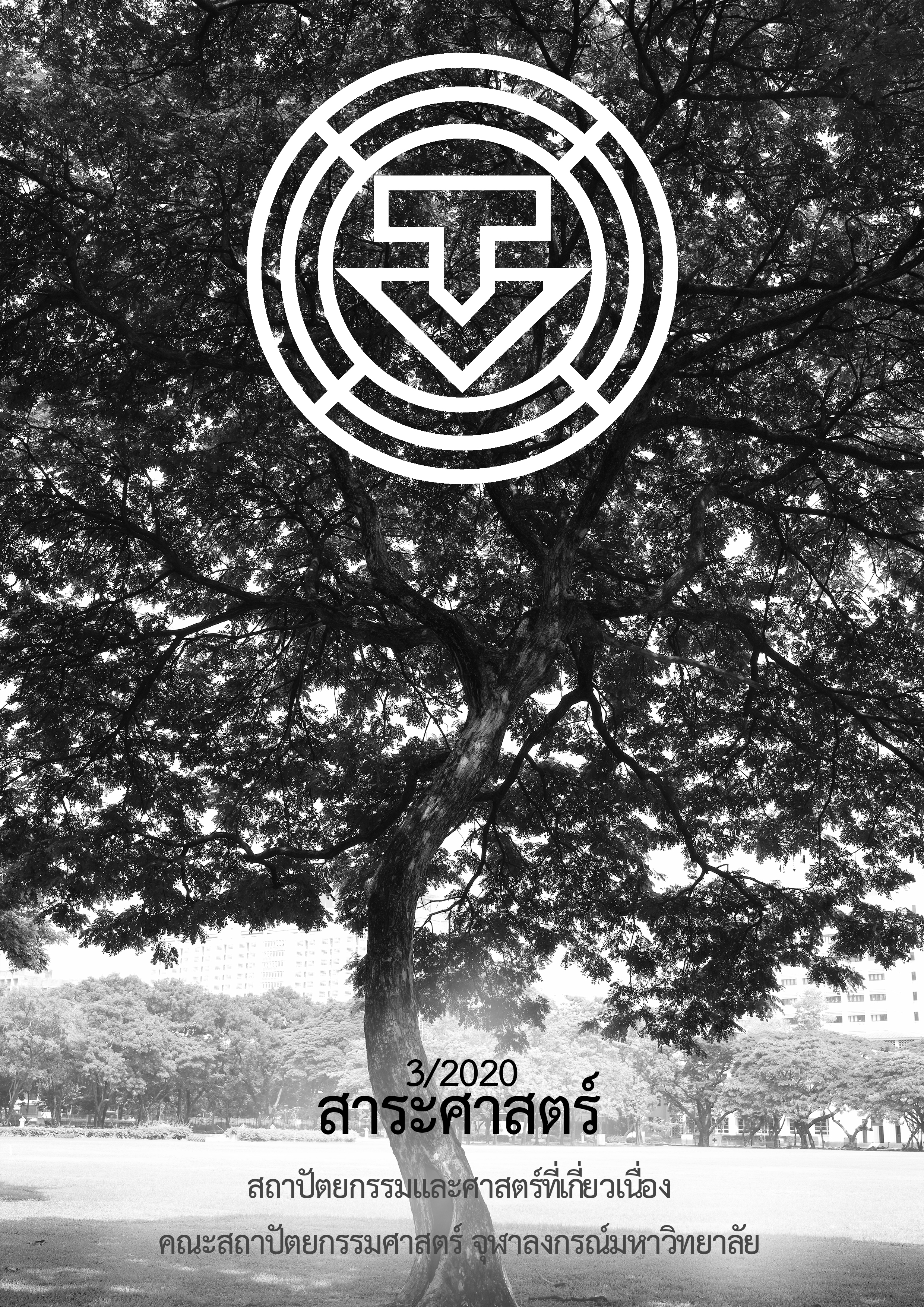แนวทางการวางแผนการใช้ประโยชน์ที่ดินและจัดการการท่องเที่ยว : กรณีศึกษา ตำบลเกาะยอ อำเภอเมือง จังหวัดสงขลา
Main Article Content
บทคัดย่อ
เกาะยอเป็นชุมชนเก่าแก่และเป็นแหล่งท่องเที่ยวสำคัญของจังหวัดสงขลา ปัจจุบันประสบปัญหาในด้านกายภาพอันเป็นผลมาจากการขยายตัวของการท่องเที่ยวที่ขาดการวางแผนให้สอดคล้องกับการอนุรักษ์คุณค่าทางธรรมชาติและวัฒนธรรมของพื้นที่ งานวิจัยนี้มุ่งเน้นศึกษาความสำคัญขององค์ประกอบที่มีคุณค่า รวมถึงการพัฒนาพื้นที่ที่สอดคล้องกับบริบทปัจจุบันโดยไม่ทำลายคุณค่าเดิม โดยมีวัตถุประสงค์เพื่อ (1) ศึกษาคุณค่าและศักยภาพของพื้นที่ (2) เสนอแนวทางการใช้ประโยชน์ที่ดินที่สอดคล้องกับบริบทของเกาะยอ และเสนอแนวทางพัฒนาการท่องเที่ยว
การวิจัยจะทำการศึกษาคุณค่าในด้านต่างๆ ของเกาะยอจากข้อมูลทุติยภูมิและจาการสำรวจพื้นที่ ศึกษาและสำรวจปัญหาด้านกายภาพและการขยายตัว จากนั้นทำการประเมินและวิเคราะห์ศักยภาพของพื้นที่ เพื่อจัดทำข้อเสนอแนะในการใช้ประโยชน์ที่ดินเพื่อการพัฒนาการท่องเที่ยวของเกาะยอ
ผลการศึกษาพบว่าเกาะยอมีคุณค่าโดดเด่น 3 ด้าน คือ (1) ด้านประวัติศาสตร์และศิลปกรรม (2) ด้านวัฒนธรรม (3) ด้านธรรมชาติและสิ่งแวดล้อม เพื่อให้การพัฒนาสอดคล้องกับคุณค่าในด้านการอนุรักษ์และศักยภาพในด้านการท่องเที่ยว จึงจัดทำข้อเสนอแนะแนวทางการใช้ประโยชน์ที่ดิน โดยกำหนดพื้นที่เพื่อการใช้งานที่เหมาะสม 8 ประเภท คือ (1) พื้นที่ส่งเสริมประวัติศาสตร์และวัฒนธรรมท้องถิ่น (2) พื้นที่อนุรักษ์ธรรมชาติและสิ่งแวดล้อม (3) พื้นที่ฟื้นฟูป่าพรุ (4) พื้นที่อนุรักษ์แหล่งเกษตรกรรม (5) พื้นที่สีเขียวเพื่อนันทนาการเชิงอนุรักษ์สิ่งแวดล้อม (6) พื้นที่รักษาระบบนิเวศทะเลสาบสงขลา (7) พื้นที่ส่งเสริมการพัฒนา (8) พื้นที่รองรับการขยายตัวในอนาคต ส่วนด้านการท่องเที่ยวเสนอให้สร้างความเชื่อมโยงของแหล่งท่องเที่ยวและพัฒนาเกาะยอเป็นแหล่งท่องเที่ยวเชิงนิเวศ โดยได้กำหนดโซนการท่องเที่ยวออกเป็น 7 โซน และจัดทำเส้นทางการท่องเที่ยว 2 เส้นทาง
Article Details
เอกสารอ้างอิง
กรมการท่องเที่ยว. คู่มือการตรวจประเมินมาตรฐานคุณภาพแหล่งท่องเที่ยวเชิงนิเวศ. กรุงเทพฯ: กระทรวงการท่องเที่ยวและกีฬา, 2557.
กรมส่งเสริมอุตสาหกรรม. Creative Industry Village: CIV หมู่บ้านอุตสาหกรรมสร้างสรรค์. กรุงเทพฯ: กระทรวงอุตสาหกรรม,2560.
กองจัดการสิ่งแวดล้อมธรรมชาติและศิลปกรรม. “แหล่งศิลปกรรมอันควรอนุรักษ์.” สืบค้น 10 เมษายน 2562. http://culturalenvi.onep.go.th/site/7?&province=71.
ฉันทัช วรรณถนอม. อุตสาหกรรมท่องเที่ยว. กรุงเทพฯ: ห้างหุ้นส่วนจำกัดสยามลดา, 2552.
ทรงธรรม สุขสว่างและธรรมนูญ เต็มไชย. แนวเชื่อมต่อระบบนิเวศในประเทศไทย. กรุงเทพฯ: สถาบันนวัตกรรมอุทยานแห่งชาติและพื้นที่คุ้มครอง สำนักงานอุทยานแห่งชาติ, 2557.
ปรานอม ตันสุขานนท์. การอนุรักษ์ชุมชนเมือง. กรุงเทพฯ: สำนักพิมพ์แห่งจุฬาลงกรณ์มหาวิทยาลัย, 2559.
มิ่งสรรพ์ ขาวสะอาด, อัครพงศ์ อั้นทอง, พรทิพย์ เธียรธีรวิทย์, กุลดา เพ็ชรวรุณ, นุกูล เครือฟู. เศรษฐศาสตร์ว่าด้วยการท่องเที่ยว. เชียงใหม่: ล็อคอินดีไซน์เวิร์ค, 2556.
สยามรัฐออนไลน์. “ประชารัฐมหาดไทยรับลูกบิ๊กตู่เร่งเครื่อง OTOP นวัตวิถีหนุนไทยนิยมยั่งยืน.” สืบค้น 3เมษายน 2563. https://siamrath.co.th/n/48873?fbclid=IwAR2IOfGWRseGhTruWNLvPqbyB.
สำนักงานนโยบายและแผนทรัพยากรธรรมชาติและสิ่งแวดล้อม. ระบบเพื่อการอนุรักษ์สิ่งแวดล้อมทางธรรมชาติและศิลปกรรม (Cultural Environment Conservation System: CECS). กรุงเทพฯ: สำนักงานนโยบายและแผนทรัพยากรธรรมชาติและสิ่งแวดล้อม, 2548.
สิทธิพร ภิรมย์รื่น. การวางแผนด้านกายภาพ. กรุงเทพฯ: เจปริ้น, 2553.
องค์การบริหารส่วนตำบลเกาะยอ. แผนพัฒนาท้องถิ่นสี่ปี (พ.ศ.2561-2564). สงขลา: องค์การบริหารส่วนตำบลเกาะยอ, 2561.


